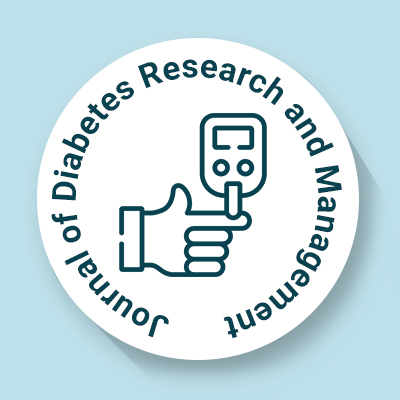
Journal of Diabetes Research and Management
OPEN ACCESS

OPEN ACCESS
Various types of nerve damage caused by diabetes mellitus are known as diabetic neuropathy. The most prevalent type, diabetic peripheral neuropathy, impacts about 30% of individuals with diabetes. Research indicates that cutaneous nerve branches, like the sural nerve, are affected in over half of diabetes patients a decade after their diagnosis, and this can be identified using high-resolution magnetic resonance imaging. The symptoms experienced can vary based on the location of the nerve damage and may include motor issues such as weakness, sensory symptoms like numbness, tingling, or pain, and autonomic changes that can lead to urinary problems. These symptoms are believed to stem from microvascular injury affecting the small blood vessels that supply the nerves (vasa nervorum). Diabetic neuropathy is associated with distal symmetric polyneuropathy, third, fourth, and sixth cranial nerve palsies, mononeuropathy, mononeuropathy multiplex, diabetic neuropathy, and autonomic neuropathy.
In diabetic neuropathy sensory neurons, motor neurons, and autonomic nerves can be affected. As a result, it has the potential to influence nearly any organ system, leading to a variety of symptoms. There are multiple specific syndromes that correspond to the different organ systems involved.
Sensorimotor Polyneuropathy
Longer nerve fibers are more significantly impacted than shorter ones, as the speed of nerve conduction decreases with the length of the nerve. In this syndrome, the initial symptoms of decreased sensation and loss of reflexes appear in the toes of each foot and then progress upward. This condition is often characterized by a glove-stocking pattern of numbness, sensory loss, dysesthesia, and pain that tends to occur at night. The pain may be described as burning, prickling, achy, or dull.
Autonomic Neuropathy
It consists of nerves that control the heart, lungs, blood vessels, bones, fat issue, sweat glands, gastrointestinal system, and genitourinary system. Any of these organ systems can be affected by autonomic neuropathy. In diabetes, orthostatic hypotension is a common type of autonomic dysfunction that can cause dizziness or fainting when standing up because blood pressure drops suddenly. A diabetic autonomic neuropathy occurs when the heart and blood vessels fail to adjust properly, preventing adequate blood flow to the brain. Often this symptom is accompanied by a loss of respiratory sinus arrhythmia, or breathing-induced heart rate changes. Together, these signs indicate autonomic neuropathy.
Cranial Neuropathy
Oculomotor neuropathies are the most common when cranial nerves are involved. The oculomotor nerve is responsible for controlling all the muscles that move the eye, with the exception of the lateral rectus and superior oblique muscles. Additionally, it plays a role in constricting the pupil and lifting the eyelid. Diabetic third nerve palsy typically has a sudden onset, often starting with pain in the forehead or around the eye, followed by double vision. While all the oculomotor muscles innervated by the third nerve can be affected, those that regulate pupil size usually remain intact in the early stages. This is due to the fact that the parasympathetic nerve fibers within CNIII that affect pupillary size are located on the outer edges of the nerve.